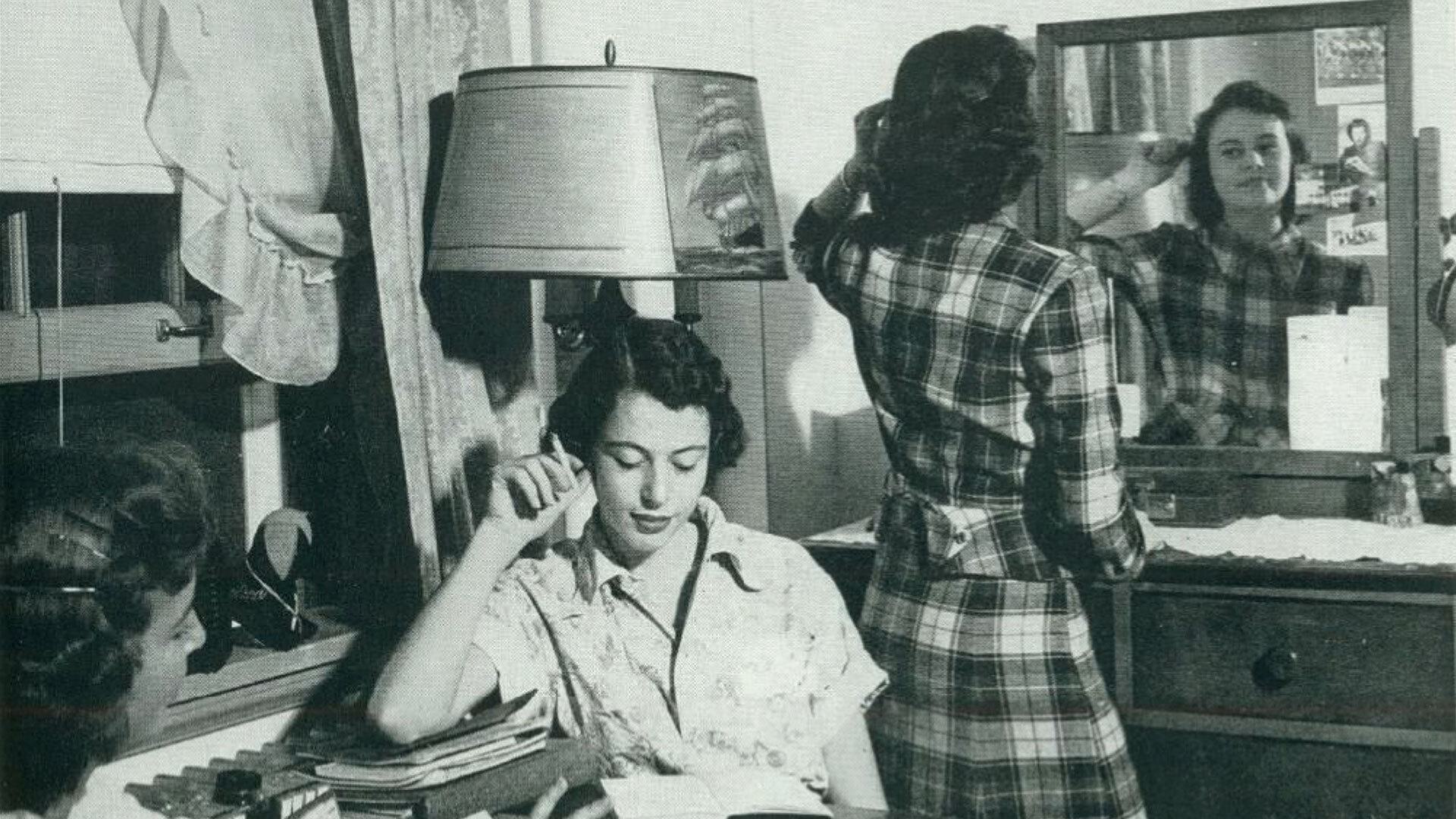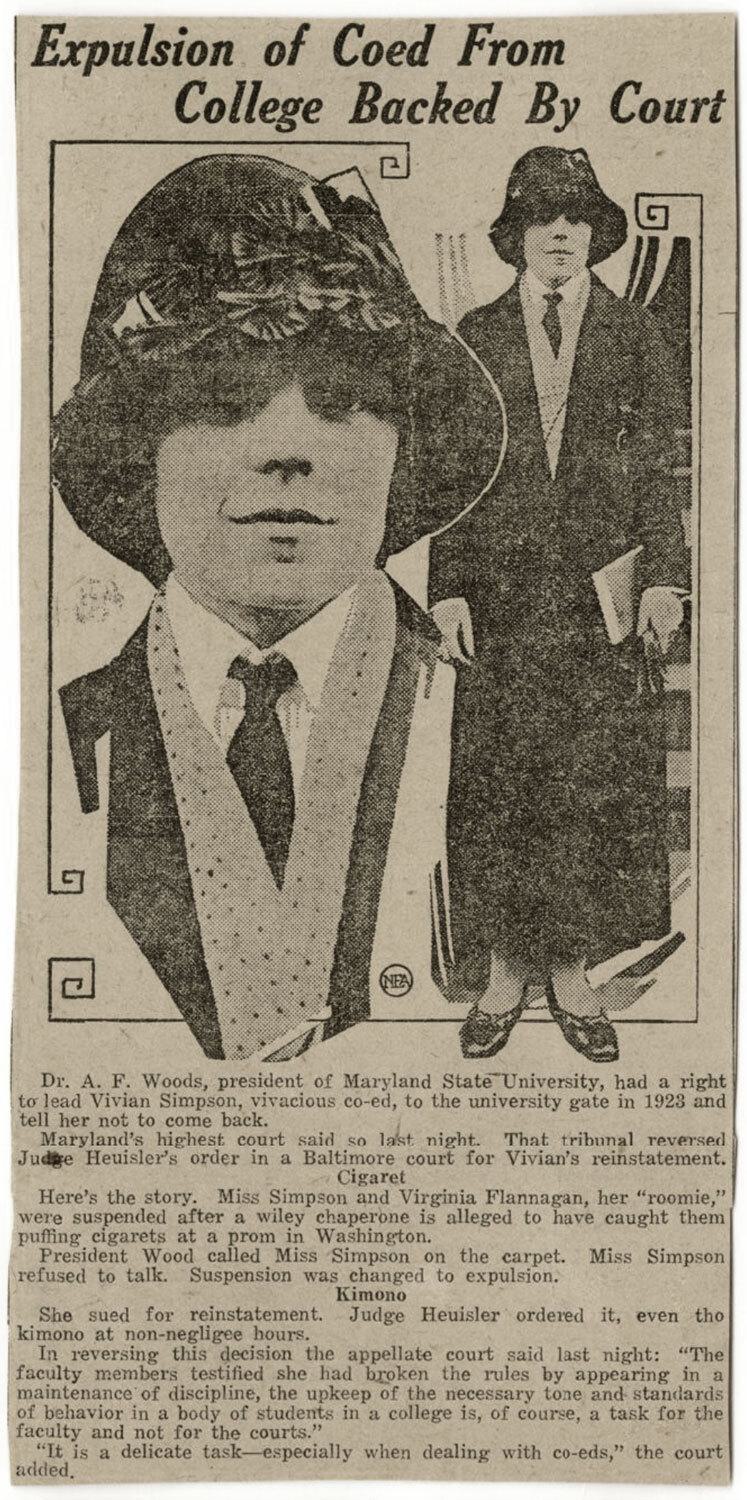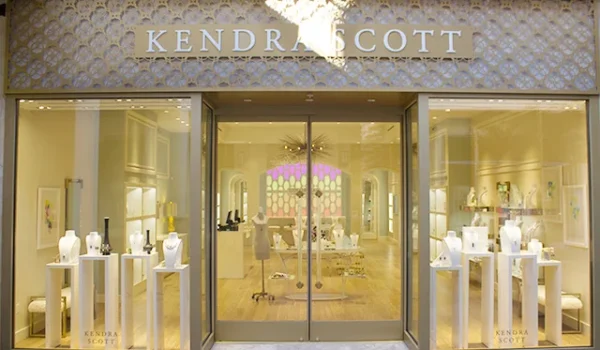Curfews, Dress Codes and Cookery Classes
By: Karen Shih '09 (Originally published in Maryland Today March 6, 2024)

Female students studying and getting ready in a UMD dorm room in 1951. Until the 1970s, women were expected to follow strict dress codes at all times, abide by curfews and study just a few subjects, including home economics and teaching. Photo from University of Maryland Libraries
If wearing your hair loose in front of men and keeping your lights on past 10:30 p.m. was enough to get female students kicked out of the University of Maryland, campus would be much emptier today.

Newspaper clipping on a court ruling supporting the university’s decision to expel Vivian Simpson for smoking and wearing a kimono at an improper time.
But 100 years ago, the “insolent” and “aggressive” Vivian Simpson—as then President Albert F. Woods called her in a bitter lawsuit—was thrown out for her “flagrant” disregard of the university’s rules for women. She started a sorority without permission and smoked in her room, protesting the unequal treatment of female students, who were bound by seemingly endless restrictions.
These included an early 7:30 p.m. weekday curfews, mandatory chaperones for fraternity parties and a strict dress code forbidding “shorts, slacks, jeans, and other sportswear” unless sports were being played, all in the name of promoting “ladylike” behavior.
“There are certain fundamental principles generally accepted as proper and desirable for women,” Woods wrote in 1923.
Pioneers like Simpson, who later became a lawyer and Maryland’s first female secretary of state, poked again and again at paternalism, and by the 1970s, most of the rules were overturned. In honor of Women’s History Month, take a look back at those early years.
The Rules
Regulations for women governed everything from typewriter usage (banned after 7:30 p.m., except for between 10 and 10:30), to specific timeframes for male callers, to smoking (prohibited, even off-campus). On the other hand, “as far as I know, there was never a curfew for male students,” said University Archivist Emerita Anne Turkos.
Those who strayed could be “campused”—confined to their rooms except for classes and meals—or suspended or expelled.
In a letter home, Mollee Coppel Kruger ’50 wrote about getting in a few minutes past the 10:15 p.m. weekend curfew: “Naturally the front door was locked. Betty pushed open the window to the office and in we both crawled, crossed out our names and the sign out list, and dashed into the laundry room to collect ourselves.”
The Dean of Women
Female students began enrolling at UMD in 1916, and Adele H. Stamp was appointed the first dean of women six years later. “She had a dramatic, long-term impact,” Turkos said. “She looked at those young women as her children and really was totally consumed by their welfare.”
Though she frowned on open-toe shoes and “unrestrained courtship,” she also created traditions like May Day, which celebrated graduating seniors with elaborate costumes, songs and skits; founded the Women’s Senior Honor Society, which became Maryland’s chapter of Mortar Board; and organized the first Women’s Physical Education Club, establishing women’s athletics on campus. By the time she retired in 1960, the number of women students had grown to 4,000 (out of the total of 13,000); the student union was named for her in 1983.
[The Godmother of Title IX: Bernice Sandler Ed.D. ’69 Was the Force Behind the Seminal Law]
The Extracurriculars
Campus life wasn’t all tea service and sewing machine care. Starting in the 1920s, women competed in tennis, basketball, track and riflery (Irene Knox ’34 even qualified for the 1932 Olympic Games), formed the first official sorority on campus and integrated organizations including the student newspaper—though it wasn’t until 1944 that Jackie Brophy became the first female editor-in-chief of The Diamondback.
The Classes
Women were steered primarily into teaching and the College of Home Economics, established in 1918. Areas of study included cookery, textiles, hygiene and home management. (Occasionally, men also took classes in the college; Muppets creator Jim Henson ’60 earned a degree in home economics.)
The two earliest female graduates bucked the trend: Charlotte Vaux earned a two-year degree in agriculture in 1918, and Elizabeth Hook earned a four-year degree in entomology in 1920. It was tough for the earliest women in the sciences: Janet Weidemann Crampton ’37 recalled in her chemistry lab, the men hooked up her Bunsen burner to water, causing it to spray and destroy her notes.
Maryland Today is produced by the Office of
Marketing and Communications for the University of Maryland community.


